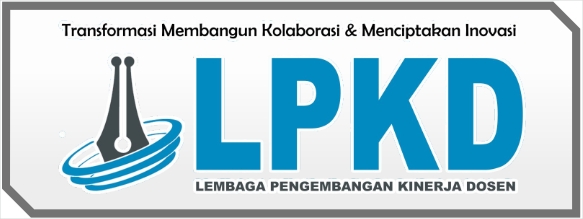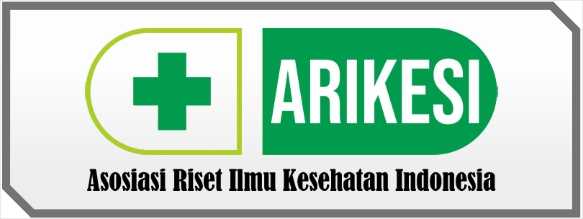Menjelajahi Sifat Antiinflamasi dan Antioksidan Jahe Merah pada Pencegahan Terjadinya Polikistik Ovarium Syndrome (PCOS): Studi In Silico dan In Vivo
DOI:
https://doi.org/10.57213/tjghpsr.v3i2.770Keywords:
Red ginger, anti-inflammatory and antioxidant, PCOS preventionAbstract
Background of the incident of increasing cases of polycystic ovary syndrome (PCOS) with a prevalence of insulin resistance of 50-75%, insulin resistance will cause oxidative stress due to hyperglycemia which will then increase proinflammatory cytokines in TNF-α and other cytokines, thus triggering an increase in inflammation resulting in an increase in infertility cases of 89.6%. The aim is to investigate the prevention of PCOS through red ginger injected with testosterone propionate in vivo, insilico using open babel software on PyRx V.1.0. The in vivo method is an experimental laboratory study, using two five rats of the rattus norvegicus type divided into five groups using PCOS prevention through red ginger, examinations carried out on blood and ovarian organs, preparations were made which were observed with a binocular microscope on TNF-a examination with immunohistochemistry, ELISA examination on insulin levels, blood examination on blood glucose, data analysis was carried out using one way ANOVA. The study began with the preparation of control activator ligands, 6-Shogaol (Pubchem ID 5281794) and 6-Gingerol (Pubchem ID 442793) and target receptors TNF-α (PDB ID: 2AZ5) and KEAP1-NRF2 (PDB ID: 5CGJ), Insilico results that occur in red ginger are able to interact at a similar position in the interaction of TNF-α with control compared to KEAP1. In vivo research results showed that testosterone propionate 100 mg / kg BW significantly increased the inflammatory cytokine TNF-α, along with polycystic markers in folliculogenesis (p <0.05) compared to negative controls and administration of red ginger at 800 mg / kg significantly decreased TNF-α levels. red ginger also prevents the occurrence of pcos. The conclusion shows that the bioactive 6-shogaol 6-gingerol in red ginger can provide preventive benefits in polycystic ovary syndrome (pcos) by modulating the inflammatory pathway.
References
Chakraborty, A., Mukherjee, S., Sikdar, S., Paul, A., & Ghosh, S. (2012). [6]-Gingerol isolated from ginger attenuates sodium arsenite induced oxidative stress and plays a corrective role in improving insulin signaling in mice. Toxicology Letters, 210(1), 34–43.
Das, N., Islam, M. E., Jahan, N., Islam, M. S., Khan, A., Islam, M. R., & Parvin, M. S. (2014). Antioxidant activities of ethanol extracts and fractions of Crescentia cujete leaves and stem bark and the involvement of phenolic compounds. BMC Complementary and Alternative Medicine, 14(1), 1–12.
David. (2021). DAVID: A web server for functional enrichment analysis and functional annotation of gene lists (2021 update). Nucleic Acids Research, 50(W1), W216–W221.
Diapeti, A. M., Merlita, H., & Doti, W. (2019). Pengaruh kombinasi dekokta Zingiber officinale var. rubrum dan Imperata cylindrica terhadap kadar TNF-α serum tikus osteoartritis. Tesis. Fakultas Kedokteran Universitas Malang.
Filimonov, D. A., Lagunin, A. A., Gloriozova, T. A., Rudik, A. V., Druzhilovskii, D. S., Pogodin, P. V., & Poroikov, V. V. (2014). Prediction of the biological activity spectra of organic compounds using the PASS online web resource. Chemistry of Heterocyclic Compounds, 50, 444–457.
Indrawati, I., Miranti, M., & Mayfi, I. R. (2017). Antibacterial activity of ethanolic extracts of rhizome from three ginger varieties against acne isolated bacteria. Nusantara Bioscience, 9(1), 92–96.
Jia, Y., Li, X., Meng, X., Lei, J., Xia, Y., & Yu, L. (2023). Anticancer perspective of 6-shogaol: Anticancer properties, mechanism of action, synergism and delivery system. Chinese Medicine, 18(1), 138.
Lizneva, D., Suturina, L., Walker, W., Brakta, S., Gavrilova-Jordan, L., & Azziz, R. (2016). Criteria, prevalence, and phenotypes of polycystic ovary syndrome. Fertility and Sterility, 106(1), 6–15. https://doi.org/10.1016/j.fertnstert.2016.05.003
Mak, K. K., Zhang, S., Sakirolla, R., Balijepalli, M. K., Dinkova-Kostova, A. T., Epemolu, O., ... & Pichika, M. R. (2023). Synthesis of new shogaol analogues as NRF2 activators and evaluation of their anti-inflammatory activity, modes of action and metabolic stability. Antioxidants, 12(2), 475.
Morvaridzadeh, M., Sadeghi, E., Agah, S., Fazelian, S., Rahimlou, M., Kern, F. G., ... & Heshmati, J. (2021). Effect of ginger (Zingiber officinale) supplementation on oxidative stress parameters: A systematic review and meta‐analysis. Journal of Food Biochemistry, 45(2), e13612.
Okamoto, M., Irii, H., Tahara, Y., Ishii, H., Hirao, A., Udagawa, H., ... & Shimizu, I. (2011). Synthesis of a new [6]-gingerol analogue and its protective effect with respect to the development of metabolic syndrome in mice fed a high-fat diet. Journal of Medicinal Chemistry, 54(18), 6295–6304.
Piñero, J., Ramírez-Anguita, J. M., Saüch-Pitarch, J., Ronzano, F., Centeno, E., Sanz, F., & Furlong, L. I. (2020). The DisGeNET knowledge platform for disease genomics: 2019 update. Nucleic Acids Research, 48(D1), D845–D855.
Rachman, D. F., Merlita, H., & Wahyuningsih, D. (2019). Efek kombinasi dekokta rimpang jahe merah dan rimpang Imperata cylindrica terhadap kadar superoxide dismutase (SOD) dan malondialdehyde serum tikus osteoartritis. Disertasi. Fakultas Kedokteran UIN Malang.
Riduan, R. J. (2015). Pengaruh pemberian ekstrak jahe merah terhadap gambaran histopatologi pankreas yang diinduksi aloksan. Disertasi. Fakultas Kedokteran Universitas Lampung.
Russo, G., Liguori, I., Curcio, F., Bulli, G., Aran, L., Della-Morte, D., ... & Abete, P. (2012). Oxidative stress and diseases. In Oxidative Medicine and Cellular Longevity (pp. 757–772). https://doi.org/10.5772/2535
Sherman, B. T., Hao, M., Qiu, J., Jiao, X., Baseler, M. W., Lane, H. C., ... & Chang, W. (2022). DAVID: A web server for functional enrichment analysis and functional annotation of gene lists (2021 update). Nucleic Acids Research, 50(W1), W216–W221.
Supu, R. D., et al. (2018). Red ginger (Zingiber officinale var. rubrum): Its chemical constituents, pharmacological activities and safety. Fitifarmaka: Jurnal Ilmiah Farmasi, 8(1), 2087–9164.
Taylor, H., Pal, L., & Sel, S. (2019). Speroff's Clinical Gynecologic Endocrinology and Infertility (9th ed.). Wolters Kluwer.
Trott, O., & Olson, A. J. (2010). AutoDock Vina: Improving the speed and accuracy of docking with a new scoring function, efficient optimization, and multithreading. Journal of Computational Chemistry, 31(2), 455–461.
Velaga, V. S. A. R., Suryadevara, N., Chee, L. L., & Ismail, N. E. (2017). Phytochemical analysis and immune-modulatory effect of Moringa oleifera flowers. International Journal of Pharmacy and Pharmaceutical Sciences, 9(6), 24. https://doi.org/10.22159/ijpps.2017v9i6.16
Wang, M.-X., Yin, Q., & Xu, X. (2020). A rat model of polycystic ovary syndrome with insulin resistance induced by letrozole combined with high-fat diet. Medical Science Monitor, 26. https://doi.org/10.12659/MSM.922136
Winkel, A. F., Engel, C. K., Margerie, D., Kannt, A., Szillat, H., Glombik, H., ... & Schmoll, D. (2015). Characterization of RA839, a noncovalent small molecule binder to Keap1 and selective activator of Nrf2 signaling. Journal of Biological Chemistry, 290(47), 28446–28455.
Yücel, Ç., Karatoprak, G. Ş., Açıkara, Ö. B., Akkol, E. K., Barak, T. H., Sobarzo-Sánchez, E., & Shirooie, S. (2022). Immunomodulatory and anti-inflammatory therapeutic potential of gingerols and their nanoformulations. Frontiers in Pharmacology, 13, 902551.
Zuo, T., Zhu, M., & Xu, W. (2016). Roles of oxidative stress in polycystic ovary syndrome and cancers. Oxidative Medicine and Cellular Longevity, 2016, 1–14. https://doi.org/10.1155/2016/8589318
Downloads
Published
Issue
Section
License
Copyright (c) 2025 The Journal General Health and Pharmaceutical Sciences Research

This work is licensed under a Creative Commons Attribution-ShareAlike 4.0 International License.













